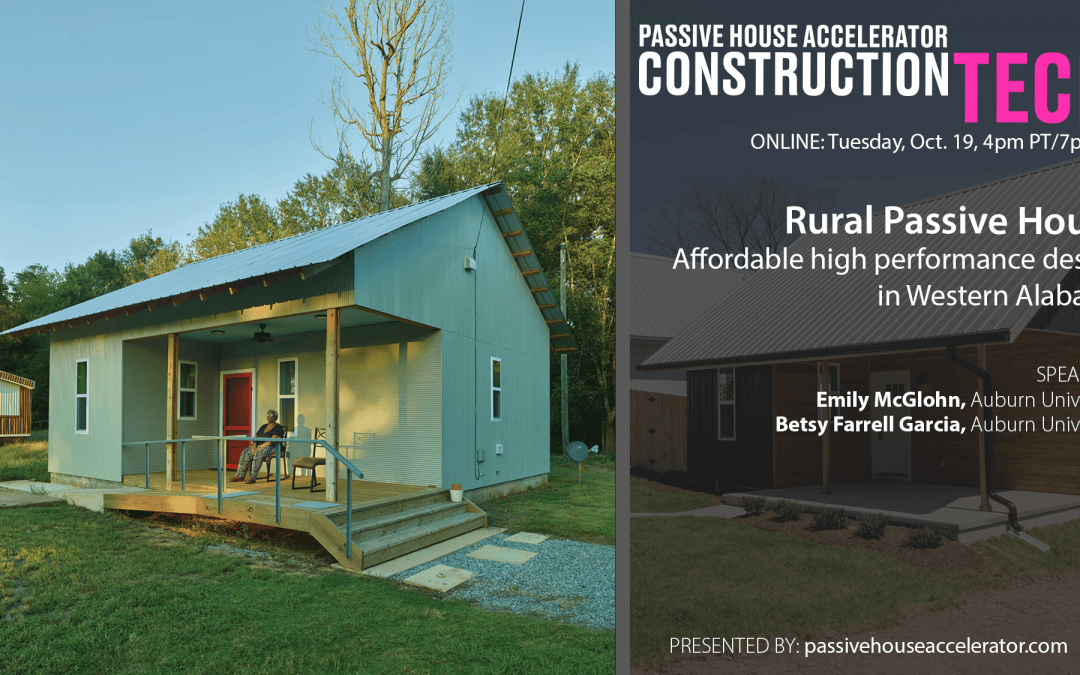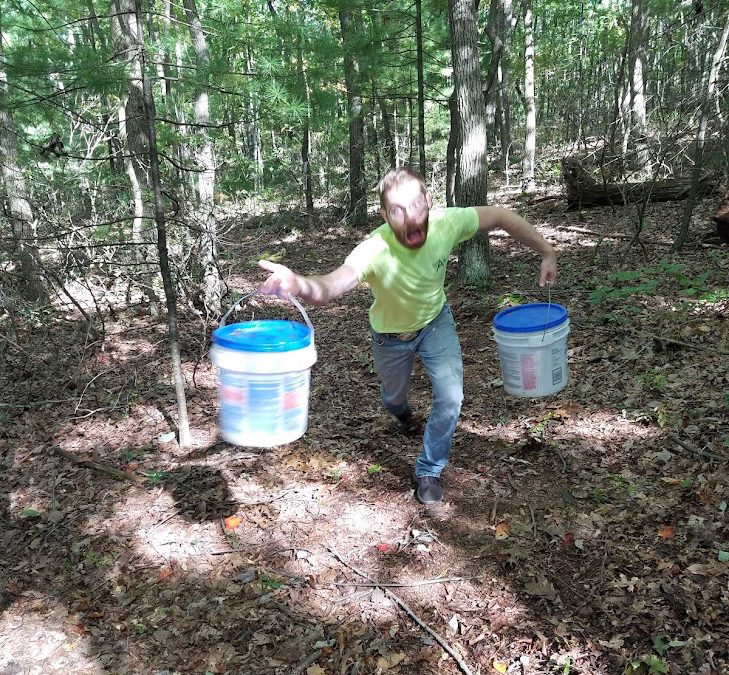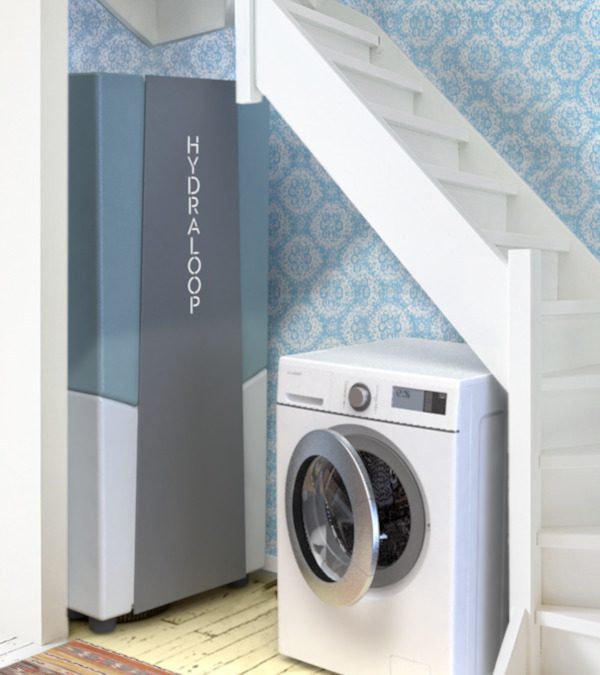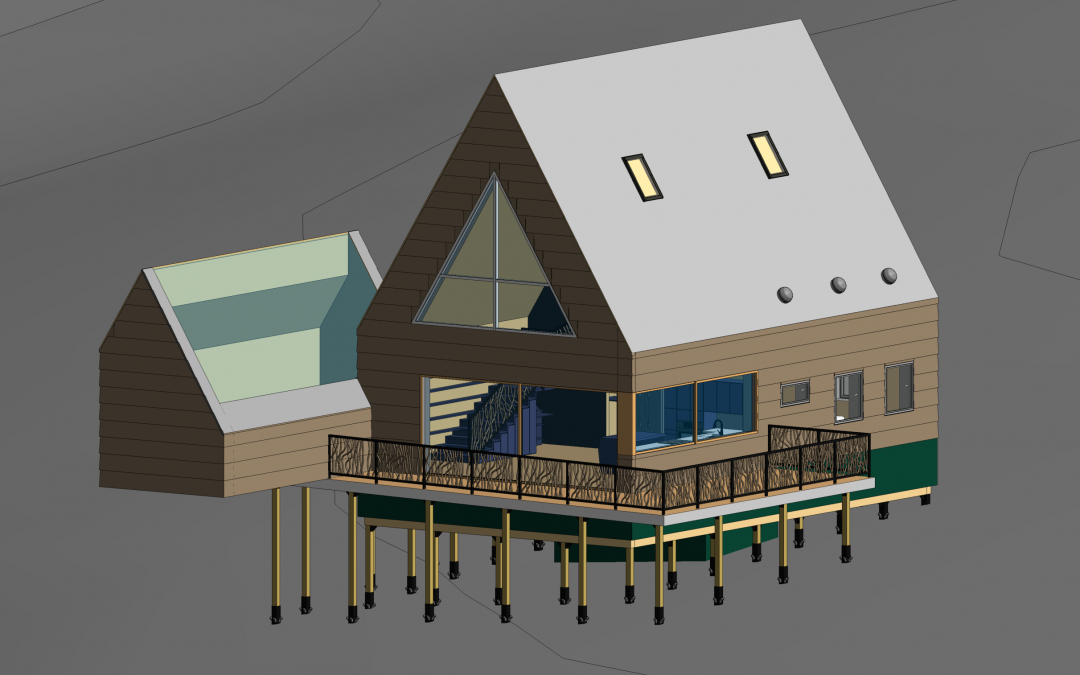
by William | Oct 27, 2021 | Passive House
Dear Readers,
The Rural Studio’s 20K House Project was introduced to us on one of Passive House Accelerator’s Construction Tech Tuesdays. We didn’t know anything about the 20K House Project previous to attending Tuesday evening’s gathering.
…Really though…all the knowledge we had of this 20K House Project was the title, which intrigued us because it had the word “rural” in it. We thought, “Hey, we are rural! And it seems like they are bringing the Passive House standard to rural areas? That’s neat. We’ll listen in on this…”
Little did we realize how gosh darn awesome this project really was.
And it is more than just a singular project…it is a whole program. Based in rural Alabama, it is an academic, student-driven, community-centered, people conscious, environmentally aware, and fluid architecture program. This program revives the ethos of ‘home as the human habitat’ and the fundamental ‘why’ behind education with every single home they build.
Yeah. That’s right. Bringing back the purpose of education and the primal human necessity of home with local, cultural, and interpersonal relevance.
They are that awesome.
Here’s how.

by William | Oct 13, 2021 | Small Footprint
Dear Readers,
Holes were dug. Water was lugged. Our arms are now so sore and tired, we couldn’t even give a hug…
If anyone ever wondered what was involved in a soil and percolation test, that basically sums it up.
Even though we have no intention to install an on-site septic system (like a sand mound), the PA DEP has stated that for us to pursue an experimental permit (and have fun with our compost toileting and greywater reuse) we must first prove that a conventional system can be put in if need be. That means we must pass both a soil and a percolation test.
Soil Test
For those more interested in the technicalities, William and I first had to start with our SEO doing a soil test. If we passed the soil test, the SEO would then proceed to do a percolation test (colloquial term, “perc test”). The point of the soil test is to see if our soil is of a grade and quality that can effectively filter wastewater. The SEO needs to have multiple holes dug down to where “glacial till” can be found (the level in soil most undisturbed, and brought about by the movement of glaciers). These ‘holes’ (‘pits’, or even ‘trenches’ is more like it) had to be dug in an area near our home’s prospective location.
The adventure began with us figuring out how to dig (what I thought was supposed to be) three or four 4-5’ long and 10’ deep trenches for our soil test.
Yes, 10 feet deep trenches…plural…trenches. And what digs 10’ deep trenches? A backhoe. But, backhoes can be big. Very big. With a big footprint on our land and too big to fit through the 5 to 7-ish ft. wide (and 300 foot long…) path we currently have up to our home’s intended location and where this soil test needed to occur. So, what else can dig a 10’ deep trench that can fit through our small path? People.
And thus, with optimism in our hearts, naivety in our young brains, and a ladder standing by…we pulled up our sleeves and dug.

by William | Oct 6, 2021 | Passive House
Dear Readers,
One beautiful Friday at the virtual Sustainability Symposium, William and I learned things. Lots o’ things. We learned concepts, best building practices, and financial motivations! Some of these things included: Transforming communities by retrofitting neglected homes to be energy efficient and healthy….the importance of material circularity for embodied carbon reduction…the necessity of ventilation in every home…and finding resilience in finance by aligning capital with incentives!!!!
Whoop whoop! What a Friday that was….
To consolidate all of those things into one key “what I learned” takeaway is super hard if you think too much about it. So, I’m not going to think too much about it. Without an overabundance of overcomplicated thought, my key takeaway is simple: The language you use matters. Simple. Yet utterly significant to every single presentation I attended that day.
If you want to convince a city council that retrofitting 6,000 dilapidating homes and buildings into super energy efficient and healthy structures in 4.5 years is not just a good, but a GREAT idea….then the language you use matters.
If you want the inhabitants of energy efficient homes and buildings to use the systems appropriately, while also valuing and understanding the ethos of a home built for net-positive and zero operational and low embodied carbon living…then the language you use matters.
If you want people to give a poop about the air they and their children breathe in their own home…then the language you use matters.
If you want financial institutions to see the value in investing in homes and buildings that are healthy for people and the planet….then the language you use matters.

by William | Sep 8, 2021 | Net Zero
Dear Readers,
William and I have been constantly mentioning the Hydraloop in our blogs and diagrams, but I don’t believe we ever wrote a blog about how it works…
So! Being better late than never…This is that blog, fulfilling that duty we take upon ourselves to explain the mesmeric methods behind all this magnetic madness.
The Hydraloop is about the size of a fridge…so it is rather large. But it needs that space to do the magic that it does! It is designed to clean water from the shower, bath, air conditioning and laundry machine without the use of any filters or chemicals. Instead of using filters to treat this greywater, it uses a combination of sedimentation, floatation, dissolved air floatation, foam fractionation, an aerobic bioreactor, and disinfection of the cleaned water with powerful UV light. Phew…lots of big words that work cohesively to make this thing work. We are going to break ‘em down, don’t worry!

by William | Sep 1, 2021 | Net Zero
Dear Readers,
You see the roof pitch on that greenhouse?? And how it matches the roof pitch of the home??? That. Right. There…is a product of GOOD math!!!
Not only do those angles just look good…but the angle of our greenhouse’s roof also creates a nearly perfectly perpendicular angle to the sun in the winter months. Why is that important, you may ask? Well, just so happens I am reading a book…that has greenhouse math in it!
The book is titled The Year-Round Solar Greenhouse. How to Design and Build a Net-Zero Energy Greenhouse, and is written by Lindsey Schiller and Marc Plinke. As the process of learning new things tends to go~ the book is both enlightening and full of ‘hard truths.’ Enlightening? I mean, just look at those roof pitches and maximum light transmission even in winter months…
Hard truths? William and I have so, so, so….so…much work to do. And there are sooooo many other things left to learn. Don’t you hate that? You learn one thing, and then it leaves you wanting to learn, like, five more things, which spurs you on to want to learn twenty-five more things…
…It’s like “you give a mouse a cookie,” except it’s not a cookie…it is a book. Which, in our world, goes from a Passive House…to a Passive House geared towards future prefabrication…to a Passive and Living Building Challenge House geared towards future prefabrication…to a Passive and Living Building Challenge House with an attached greenhouse almost half the size of the actual house with a main hobbit door all geared towards future prefabrication. Phew.





